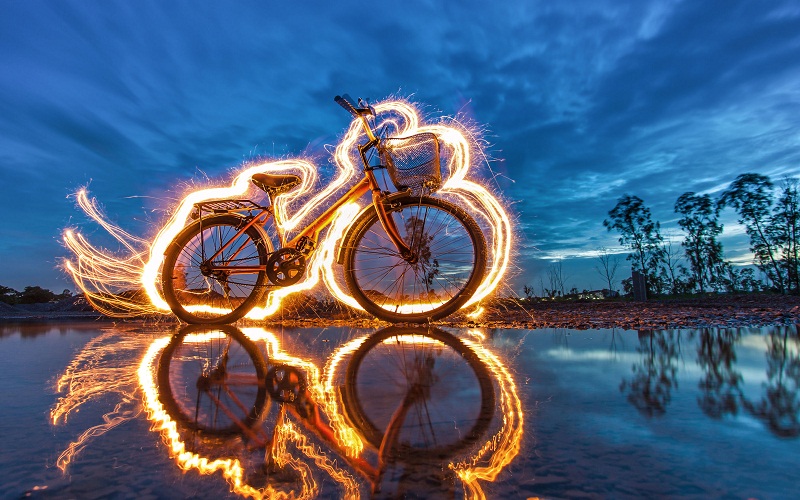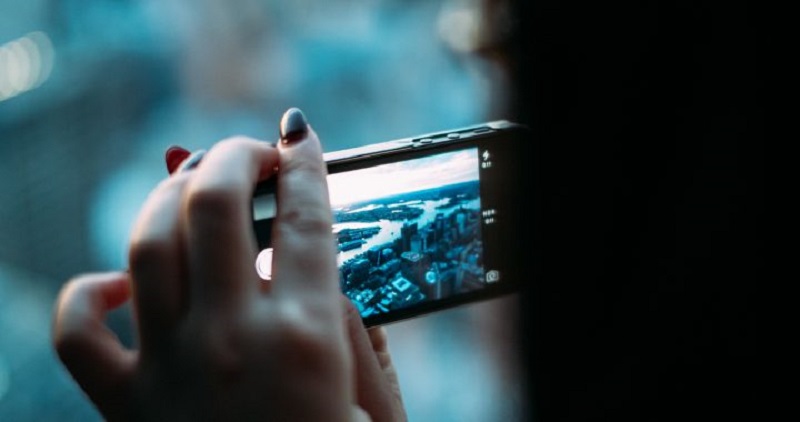Night photography– In general, the flash light covers up to 5 steps of the object to be photographed. But with some techniques we can take advantage of the camera’s functions and take good night photography. In this note we explain all the details.
Tips for taking night photography

Generally, when night falls and we want to take a picture, we simply activate the flash and take it. But the result that we get seldom leaves us satisfied. With a little practice we can take pictures using the light of the night. For example, the light of the traffic lights, cars, the street and the posters, making them the main protagonists of the image. In this note we will teach you how to improve your nocturnal photographs.
First of all we must make it clear that most of the digital cameras on the market take very goodnight photography. The most important thing is that our digital camera has the function to take photos with long exposure. Usually in manual mode. If our camera does not have the manual function. It surely has a night exposure mode. We will not achieve the same result, but we will learn the basics.
The second necessary element is a tripod. As the exhibition will take a few seconds. We should prevent the camera from moving.
Remember that the best way to get started in night photography. And to take advantage of all the tools and resources of your digital camera is to read the product manual.
With a little practice we can take pictures using the light of the night. Such as the light of traffic lights, cars, the street and posters.
How to take good pictures
It is already night and our camera is mounted on its tripod, pointing to a specific scenario. What we should do now is, if we have a manual mode, adjust the diaphragm aperture in half. It would be about f8. The exhibition will be 4 seconds. After taking the picture, we will review the result on our LCD .
To take the following pictures we will play with the shutter speed or aperture. We can modify one or both options, everything will depend on the result we want to obtain. If we want the lights to look brighter, we will open the diaphragm by lowering the number of f. Also if we want to clarify the background, we will add exposure time. It should be noted that with the practice you will obtain good results.
This type of photographs usually generate noise in the image due to low lighting. So it will be convenient to work with low-value ISO. Keep in mind that you will always get better results with professional SLR cameras.
With these tips we will be able to get started in night photography. And remember that the best way to take advantage of all the tools and resources of your digital camera is reading the product manual. This way you will know all its functions to know how to use them according to each situation.
How to Take Better Photos on the Beach

With modern cameras, maybe taking good pictures seems easier. Adjustable zoom, auto focus. And an infinite number of properties and functions allow us to take better night photography almost anywhere. Including the beach with its clear sand. Its water that reflects the light, and the great general lighting.
However, even with these modern cameras and although we are generally satisfied with the photos we take with this device. We can always improve them a little more. Although we do not seek to be professional photographers. We can take that unique photo that we were looking for to complement the decoration, to participate in a contest. Or just because, following some good advice.
Lighting details on the beach

Taking pictures on the beach at night photography has its tricks, due to the general environment conditions. People tanned and wearing colored bathing suits, often have sunscreen products on their skin. Which makes it somewhat bright. This brightness is highlighted when the sunlight. Which is abundant is reflected and refracted in the clear sand and in the sea water. In turn, the color of the sea and the color of the sky intermingle, making the more defined photographs difficult.
Focusing on dark spots will deceive the photometer, giving more light to the photograph and preventing it from going too dark.
These characteristics are typical and traditional of the beaches. But you do not need to have a professional camera. Or go crazy adapting and adjusting the settings and properties before each photo. We can apply some very simple tricks to achieve it.
Tricks to take better photos

Since the sand and the sea reflect the water. Remember to focus on overexposing the image, that is, making focus before photography in a sector -for example- of leather, a tent , a distant building. Or a bag of some tourist, avoiding focusing on the sand. Focusing on dark spots will deceive the photometer. Giving more light to the photograph and preventing it from going too dark.
You can do something similar with the color balance of the photo. Adapting the program or making a white balance on the elements present in the photo that we want to obtain.
If the sun is high in the sky, causing shadows too strong. Or highlighted, you can use a flash called “fill”. If your camera does not have this property. (or the one of night flash or flash of open spaces) It uses simply the strongest flash that has the camera. If you do not have more options than “yes”, “no” and “automatic”, take it to “yes”. So that although it is not necessary, take the photo with flash and help to hide these rigid shadows.
How to protect cameras on the beach
As you take care of your skin and your health on the beach, applying sun protection products and wearing glasses, remember that the camera is a fragile and delicate element. If your camera is aquatic you will not have problems with humidity, but with the humidity of salt water. If your camera is not aquatic (which is the majority of cases) you should always carry it in a waterproof or absorbent case, and clean it every night after its use on the beach. Avoid leaving it in the sun, in the sand, or take it with wet hands, and take care of the blows, friction and aggression of all kinds.






